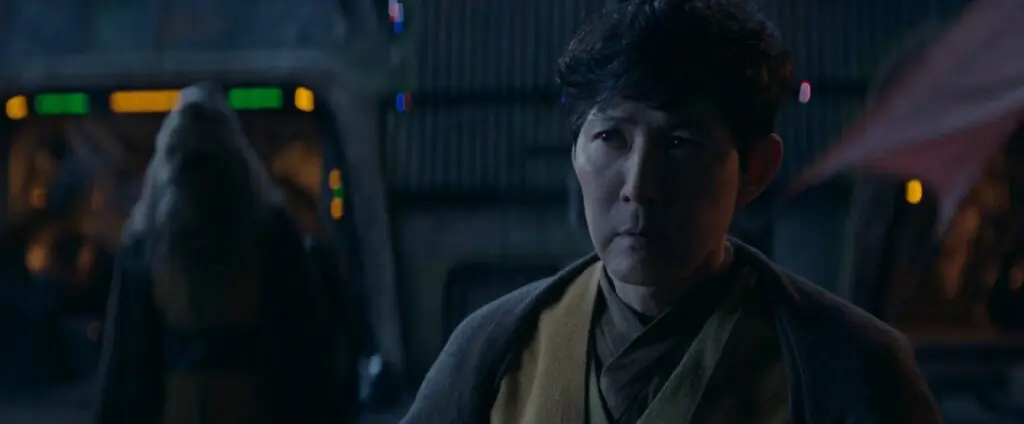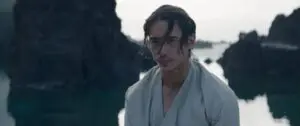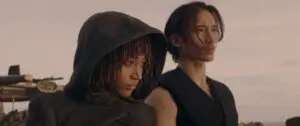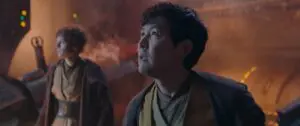Summary
The Acolyte has some decent ideas, but substandard execution raises real concerns about the show’s underlying intentions.
I hate to have to say it, but Episode 3 of The Acolyte, “Destiny”, makes me sympathetic to those who think this is the worst Star Wars show ever made.
Relax. I’m not saying I agree with bigoted fanboy gatekeeping, and I’m not saying that The Acolyte is especially terrible three episodes in, with most of the season still to come. But I’m concerned. Not about women or people of colour or fires in space or any of that nonsense, but about whether this show is any good, and whether it might be bad for dumb reasons.
Let me explain.
The Witches
“Destiny” is a flashback episode set entirely on Osha and Mae’s home world of Brendok. It’s intended to add context to the twins’ backstory by showing how they met the four Jedi that Mae is killing off in the present day, and how that meeting resulted in the apparent deaths of everyone in the secretive coven of witches in which they were raised.
Coven of witches, you say? Yes, indeed. It’d be an interesting concept if we didn’t already have a coven of witches in current Star Wars canon, and if these guys were even half as interesting as the Nightsisters of Dathomir. But we do, and they’re not, so immediately we have an issue.
Osha and Mae’s mothers were non-Jedi Force users who call the Force “The Thread” and built an insular culture around the idea. They’re all women, which raises some questions about Osha and Mae’s parentage that the episode never answers.
Who is Osha and Mae’s father? Do they have one?
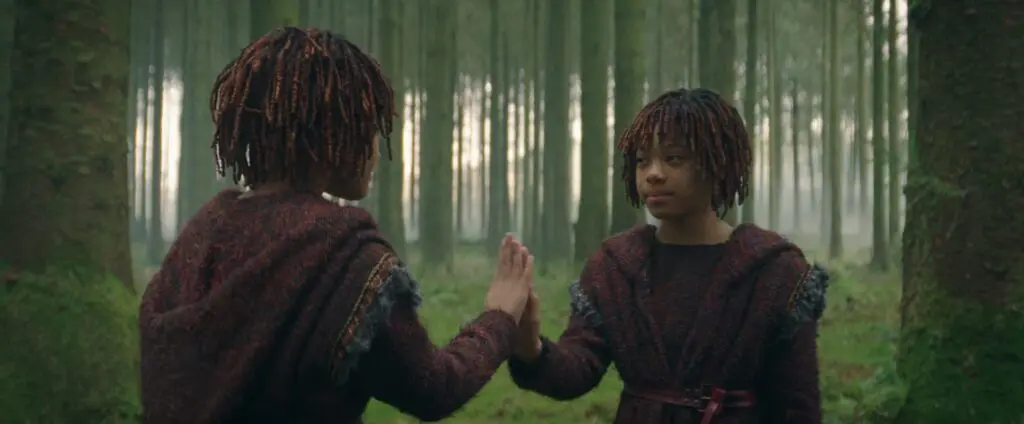
Osha and Mae in The Acolyte Episode 3
Again, to be clear, the issue isn’t that the twins had two mothers. Who cares? But it does make one wonder where Mae and Osha actually came from. Were they found abandoned? Did the witches kill their father? Can the witches reproduce without a male? Were the twins somehow sired through the Force itself?
These are pretty intriguing questions, but when Sol asks about it at one point, he’s given a hand-wavey answer that suggests to me this isn’t considered particularly important. And that’s where I start to get concerned, since it makes me worry that interrogating this will be perceived as pushing back against the two mothers thing.
It’s a predicament. I could be totally wrong. This could be a plot point that comes up later. But I shouldn’t feel this paranoid about raising potentially legitimate questions in fear of being lambasted for asking them in bad faith. The nitpicky, gatekeeping Star Wars fanbase has created a climate in which everything is perceived as an attack, but if the creators are using that tendency to obscure lazy storytelling, knowing they can write off any pushback as crazy bigotry, then we have a larger problem.
From A Different Point of View
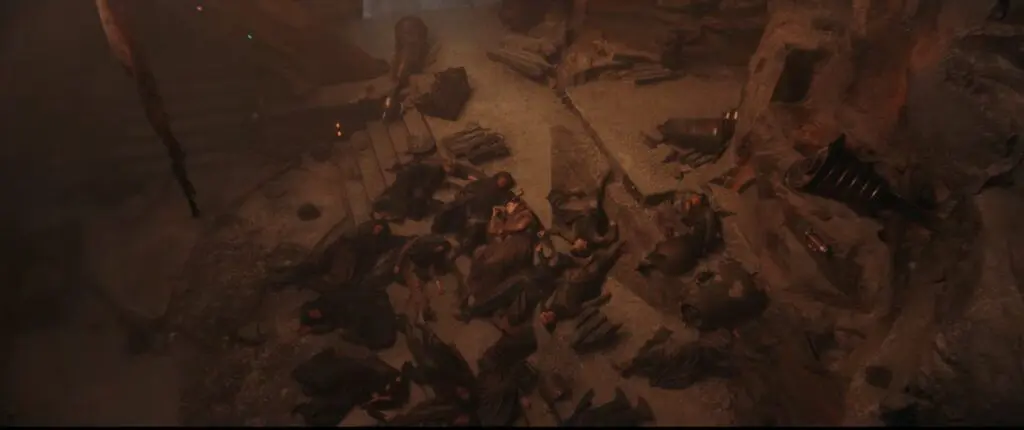
The Witches of Brendok all dead in The Acolyte Episode 3
In more positive news, I do like what The Acolyte Episode 3 is doing with perspective. Mostly.
“Destiny” takes place in Osha’s point of view. Through it, we get to see a different interpretation of the Jedi, not as cool laser sword-wielding heroes, but as stern authoritarians who stroll into a place and steal kids through pushy manipulation and the suggestion of force.
This isn’t a new concept – there have been stories all over the place that frame the Jedi tendency to recruit very young children as weird at best and actively wrong at worst. But it’s still a welcome angle to take because it’s boring for Star Wars to operate within an entirely binary morality, where the Jedi are always good and the Sith – or whoever – are always bad.
And perspective doesn’t matter in just this way. It also clearly determines the version of events we see when Mae burns the coven down. Based on what we’ve already seen – Torbin’s Barash Vow and eventual suicide in Episode 2 – and things we see in this episode – all of the witches dead in a pile in a way that doesn’t seem to have anything to do with the fire – it’s obvious that there is a very different version of these events still to be revealed.
The Acolyte Is Badly Written
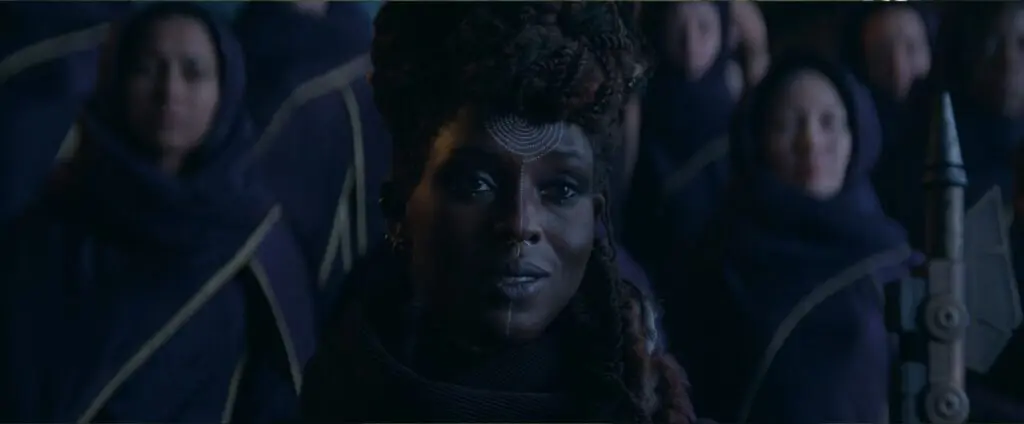
The Witches of Brendok in The Acolyte Episode 3
I said “mostly” above. Despite the underlying ideas of The Acolyte being mostly fine, the writing is, at least in this episode, appalling.
Again, there’s a difference between nitpicking a few errant silly lines and what I’m talking about here, which seems to be a complete inability or unwillingness to provide compelling justifications for what we’re seeing.
Osha and Mae don’t get on, but most siblings don’t. Their arguments essentially boil down to exchanges like this:
“You’re stupid and wrong.”
“No, you’re stupid and wrong.”
And I get that children tend to argue this way. But these differences are fundamental to the plot. When the Jedi arrive, Osha is compelled to believe them and wants to be tested to see if she can join their ranks. Mae and the other witches don’t. But we never get a sense of why Osha feels so differently. She just does.
The kids agree – under pressure from their parents – to lie in the tests. But Sol convinces Osha not to, so she doesn’t, at which point Mae turns on her so severely that she threatens to kill her, locks her in her chambers, and burns the entire place to the ground. This is such an extreme turnaround that it’s difficult to take seriously. And, yes, the point is probably that there’s more to be revealed from another perspective, one that will presumably implicate the Jedi in being complicit in the deaths of the witches and the destruction of the coven. But how does that help us now?
Why Were the Jedi Concerned About the Witches?
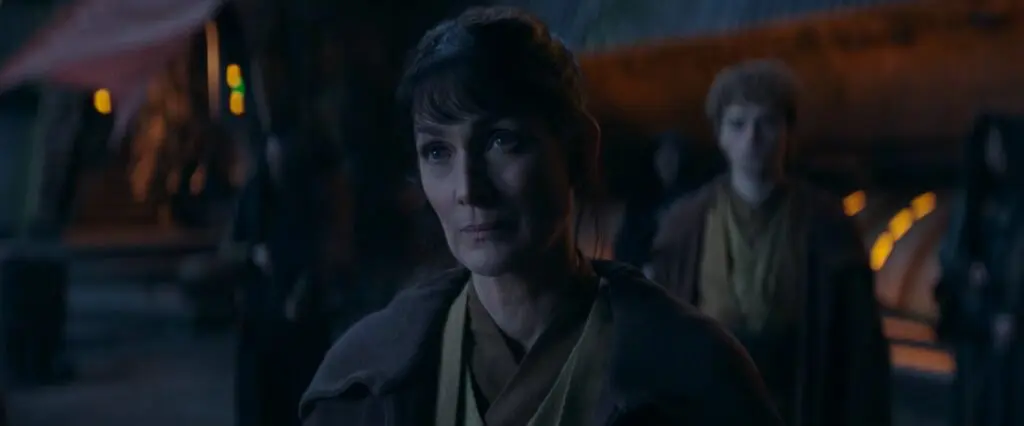
Indara in The Acolyte Episode 3
Indara mentions offhandedly that the Jedi are concerned that the witches are illegally training children in their coven in a violation of Republic laws. Are the Jedi concerned about this because they just want a monopoly on powerful children, or is there some other reason to be worried about what’s going on here?
Again, it’s never explained or even elaborated on. But it needs to be, doesn’t it? From what we’ve seen, the Jedi look like they’re harassing a family who have done nothing to them, enforcing the laws of a republic the witches of Brendok don’t claim membership of. We need more justification for why the Jedi would do this. We need more justification for why the witches are so hostile to the Jedi.
There’s something here; a compelling backbone for a new-feeling story about the Jedi at the height of their powers in an era that, for once, isn’t defined by manipulative Dark Lords and galactic conflict. And there’s still a chance that The Acolyte could legitimately explore this in depth, presenting multiple conflicting perspectives to give a more rounded account of things.
But there’s also a chance that The Acolyte won’t do this, and will instead expect us to just accept whatever we’re told and shown because this is the way things are now. Star Wars is different and we should accept it for what it is without question or concern. I hope that’s not the case, but I suppose only time will tell.
RELATED:

